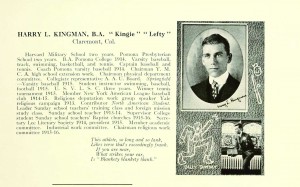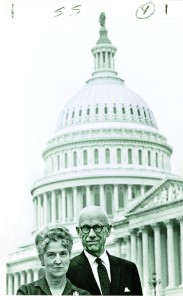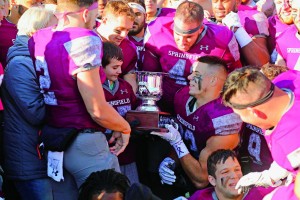Lastly
Harry Kingman '16 is one of just 13 Springfield College students ever to play Major League Baseball.
Harry Kingman '16 is one of just 13 Springfield College students ever to play Major League Baseball.
The Legend of “Mighty Harry” Kingman
Within a span of four days in December 2016, Springfield College issued two news releases that seemingly had no connection to each other.
The first sentence of the December 1 release read: “Springfield College continues to strengthen its relationships in China with the recent grand opening of the Springfield College recruitment office located in the heart of Beijing.” President Mary-Beth Cooper is depicted in a photo with Chinese scholars.
Four days later, the photogenic president was posing beside a Hall of Famer atop a news release whose first sentence read: “Baseball great Cal Ripken Jr. and the Cal Ripken, Sr. Foundation will partner with Springfield College to jointly design and build a one-of-a-kind intercollegiate and adaptive baseball park on the Springfield College campus in Springfield, Massachusetts.”
Bridging the College’s connections with China and Major League Baseball was a perfect, if unintentional, way to celebrate the centennial of the graduation of the amazing Harry Kingman, class of 1916.
Never heard of Kingman? Well, neither had I, until I started panning for gold in the Springfield College archives, the remarkable mine of the institution’s past run by Jeff Monseau. Turns out Kingman is 24-carat material.
For one thing, he is one of just 13 Springfield College students ever to play Major League Baseball (see sidebar). For another, he was born in China. In fact, when Kingman, a first baseman, briefly broke through with the New York Yankees in 1914, he became the first-ever MLB player to be born in what was already the world’s most populated country. More than a century would pass until he had some company. (Pitcher Austin Brice, born in Hong Kong, apparently decided to get in on that centennial celebration, making it up to the Miami Marlins in 2016).

That Kingman would ever set foot on the campus was highly unlikely when you consider his Opening Day—okay, his birth—was April 3, 1892, in Tientsin, China. The son of two missionaries, he lived there until age seven when the family moved to California because his father had taken a job as chaplain at Pomona College. That is where, years later, the lanky Kingman would begin his college career, which included playing five sports.
In June 1913, he submitted an application for admission to the “Physical Course of the International Young Men’s Christian Association Training School.” Two parts of the original application—conveniently harvested by our archival master, Monseau—are revealing.
In response to question 19 (“What is the work of a Y.M.C.A. or school physical director?”), Kingman wrote in a neat hand: “Coaching and caring for the physical and moral needs of pupils.” Catering to those “moral needs” would define much of the rest of his life.
The next question (“Why do you desire to enter upon the work of a Y.M.C.A. or school physical director?”) brought about a response that would soon prove ironic: “Because my tastes lie in the line of athletics and I do not wish to enter professional athletics.”
“Few have given so much of their lives to ensure man’s birthright of equality and liberty, and I treasure my years of friendship with this inspiring and courageous man.”
Kingman was admitted, made the onerous trip across the country, and enrolled in the fall of 1913, taking courses in advanced English, Old Testament, history of physical training, physics, and personal hygiene.
After a brief return to California in 1914, Kingman found himself entering professional athletics, after all. He was called up to the Yankees that summer, the same year a guy by the name of Babe Ruth made his big league debut. Kingman’s career with the Yankees would be somewhat more modest than Ruth’s. He came to the plate just four times, going 0-3 with a walk, striking out twice. But in the history of Major League Baseball not even 20,000 people have played in a game—and Harry Kingman is one of them.
In truth, baseball is just a tiny part of the Kingman legacy. After his brief tenure with the Yankees and the completion of his studies at Springfield, he would go on to live the school’s mission about leadership and service for decades.
In 1916, he began a long, distinguished career in the YMCA by taking a job as a counselor at Stiles Hall, the Y facility just off the campus of the University of California in Berkeley. After military service in World War I, he went back to Stiles, and then, in 1921, returned to China, working for six years with the International YMCA. There, he got involved with human rights advocacy, corresponding with world leaders including Mahatma Gandhi.
In 1927, as Babe Ruth was clouting 60 home runs for the powerhouse Yankees—regarded by some as the greatest team in baseball history—Kingman brought his clout back to the States, returning to Stiles Hall. He would work there for the next 30 years, most of it as general secretary. During this time he became an ever more outspoken advocate for justice. He spoke up publicly against the internment of Japanese-Americans in World War II. Interviewed by the legendary Edward R. Murrow for the CBS program This I Believe in 1954, he said that his first goal was “To live close, night and day, to just a few invaluable religious and democratic ideals, and to dedicate myself as best I can to their attainment. In my case these have been freedom of expression, equality of opportunity for racial minorities, and conciliatory methods of handling controversies.”
Kingman and his wife Ruth worked particularly hard for passage of the 1964 Civil Rights Act

After retirement in 1957, Harry Kingman and his wife—yes, her name was Ruth—moved to Washington to start “The Citizens’ Lobby for Freedom and Fair Play.” They became an absolute force in the nation’s capital. In a 1964 article in Pomona Today, Kingman stated, “Participation in government by ordinary Americans is not only possible but essential.” He and Ruth worked particularly hard for passage of the 1964 Civil Rights Act, having contact with 22 separate senators during the protracted filibuster. The law—often considered the single most influential piece of legislation in the 20th century—was made official with President Johnson’s signature on July 2 of that year.
So respected was Kingman in Washington that Supreme Court Chief Justice Earl Warren would say, “Few have given so much of their lives to ensure man’s birthright of equality and liberty, and I treasure my years of friendship with this inspiring and courageous man.”
Through it all, the passion for baseball never waned. Interviewed for a story in The New Yorker when he first came to Washington, Kingman talked about going to the stadium when the (baseball) Senators were on the road, walking down to home plate, “remembering what it had been like when I batted there forty-three years ago. Then I walked over to the dugout, just as I had done that day. It seemed just as long and grim a walk as it ever had. The thought that I had struck out made me feel just as lousy at the age of sixty-five as it had when I was a kid.”
Mighty Harry might have struck out, but by the time he died at age 90 in 1982, it was quite clear that he had hit a home run for the greater good.
Major League Baseball Players from Springfield College
LES MANN
Years Played: 1913-1928 (16 seasons)
Teams: Boston Braves, Chicago Whales, Chicago Cubs, St. Louis Cardinals, Cincinnati Reds, New York Giants
Positions: Shortstop, Left Field, Center Field, Right Field
Key Statistics:
.282 career batting average
44 home runs
Batted .328, .347, and .371 in three successive years with the Cardinals
Played in two World Series: 1914 (with Braves) and 1918 (with Cubs, against Red Sox)
Fun Facts:
From Nebraska
In original class of Springfield College Athletics Hall of Fame (along with legendary figures James Naismith, Amos Alonzo Stagg, Leslie Judd, and Archie Allen)
Was also a football star at Springfield, where he played against Jim Thorpe
Played for “Chicago Whales” in 1915, one of the teams in the short-lived Federal League, essentially a third major league. The Whales were the original occupants of Wrigley Field, longtime home of the Cubs.
HARRY KINGMAN
Year Played: 1914
Team: New York Yankees
Position: First Base
Key Statistic: Reached base on walk in one of four plate appearances (0-3 with two strikeouts)
Fun Facts:
First MLB player ever born in China (second wouldn’t be for more than a century later)
Lifelong activist for justice and equality
RALPH MITTERLING
Year Played: 1916
Team: Philadelphia Athletics
Positions: Center Field, Left Field
Key Statistic: Batted just .154 in 39 at bats, with 6 hits (all singles)
Fun Facts:
Mitterling played for the legendary Connie Mack, the longest-serving manager in Major League history.
The 1916 Athletics are often regarded as the worst team in the history of Major League Baseball. They went just 36-117 for a winning percentage of .235. Clearly, Mitterling was not the only one to have a tough year.
PETE BIGLER
Year Played: 1917
Team: St. Louis Browns
Position: Pinch Runner
Key Statistic: Bigler appeared in exactly one Major League game
Fun Fact: Bigler never came to bat or played in the field.
CY TWOMBLEY
Year Played: 1921
Team: Chicago White Sox
Position: Pitcher
Key Statistic: Twombley had a career record of 1-2.
Fun Facts:
Twombley was one of a number of players known as “Cy” in the early 20th century.
His pitching record was slightly less memorable than that of Cy Young, who won a remarkable 511 games, a record unlikely to ever be approached again.
His son, Cy Twombley Jr., was a famous American artist.
GLENN ADAMS
Years Played: 1975-82 (8 years)
Teams: San Francisco Giants, Minnesota Twins, Toronto Blue Jays
Positions: Left Field, Right Field, Designated Hitter
Key Statistics:
Career average of .280
34 career home runs
Batted over .300 three times. In 1977 with the Twins, he batted .338 with 6 home runs and 49 RBI.
Fun Fact: Only Springfield College alum ever to appear as a designated hitter in a Major League Baseball game.
GLENN SPENCER
Years Played: 1928, 1930-33 (5 years)
Teams: Pittsburgh Pirates, New York Giants
Position: Pitcher
Key Statistics:
Spencer had a career record of 23-31.
His best season came in 1931, when he went 11-12, with a 3.42 ERA, and 11 complete games.
Fun Fact: In Spencer’s rookie season of 1928, he joined a Pirates team with four future Hall of Famers: Pie Traynor, Lloyd Waner, Paul Waner, and Burleigh Grimes.
PAT CRAWFORD
Years Played: 1929, 1930, 1933-34 (4 years)
Teams: New York Giants, Cincinnati Reds, St. Louis Cardinals
Positions: First Base, Second Base, Third Base
Key Statistic: Career batting average of .280
Fun Fact: Played in the 1934 World Series with the St. Louis Cardinals, a legendary team known as the “Gashouse Gang”
ED MORIARTY
Years Played: 1935-36 (2 years)
Teams: Boston Braves, Boston Bees
Position: Second Base
Key Statistic: Career batting average of .300 (40 at bats)
Fun Fact: Moriaty’s brief career coincided with the Boston Braves becoming the Boston Bees (which they maintained for five seasons). Later, this team moved to Milwaukee, and then to Atlanta, where they have been known as the Atlanta Braves since 1966.
WARREN HUSTON
Years Played: 1937, 1944 (2 years)
Teams: Philadelphia Athletics, Boston Braves
Positions: Second Base, Shortstop, Third Base
Key Statistic: Career batting average of .165
Fun Fact: Huston’s 7-year gap between Major League seasons is nowhere close to the record. Pitcher Paul Schreiber had a 22-year gap between his appearances in 1923 and 1945.
JACK LAMABE
Years Played: 1962-68 (7 seasons)
Teams: Pittsburgh Pirates, Boston Red Sox, Houston Astros, Chicago White Sox, New York Mets, St. Louis Cardinals, Chicago Cubs
Position: Pitcher
Key Statistic: Career record of 33-41
Fun Facts:
After a great 1963 season with the Boston Red Sox (7-4, 3.15 ERA), Lamabe lived on campus as a full-time student for much of the 1963-64 school year.
He pitched in three games of the 1967 World Series for the Cardinals against the Red Sox.
ARCHIE MOORE
Years Played: 1964-65
Team: New York Yankees
Positions: First Base, Left Field, Center Field, Right Field
Key Statistics:
Career batting average of .275
Batted .412 in his final year (17 at bats)
Fun Facts:
Depicted in a photo in the 1964 yearbook with legendary baseball coach Archie Allen as “the Archies”
Teammates with Mickey Mantle
WAYNE GRANGER
Years Played: 1968-76 (9 years)
Teams: St. Louis Cardinals, Cincinnati Reds, Minnesota Twins, New York Yankees, Chicago White Sox, Houston Astros, Montreal Expos
Position: Pitcher
Key Statistics:
Pitched in 451 games, all in relief, compiling a record of 35-35 with a 3.14 ERA
In 1969, he appeared in a remarkable 90 games, with a 9-6 record, a 2.80 ERA, and 27 saves.
Fun Facts:
Hit a home run—a rare feat for a relief pitcher—in 1971
Won the Sporting News “Fireman of the Year” (as the game’s top relief pitcher) in both 1969 and 1970.
Pitched in two World Series: 1968 for the Cardinals, and 1970 for the Reds



